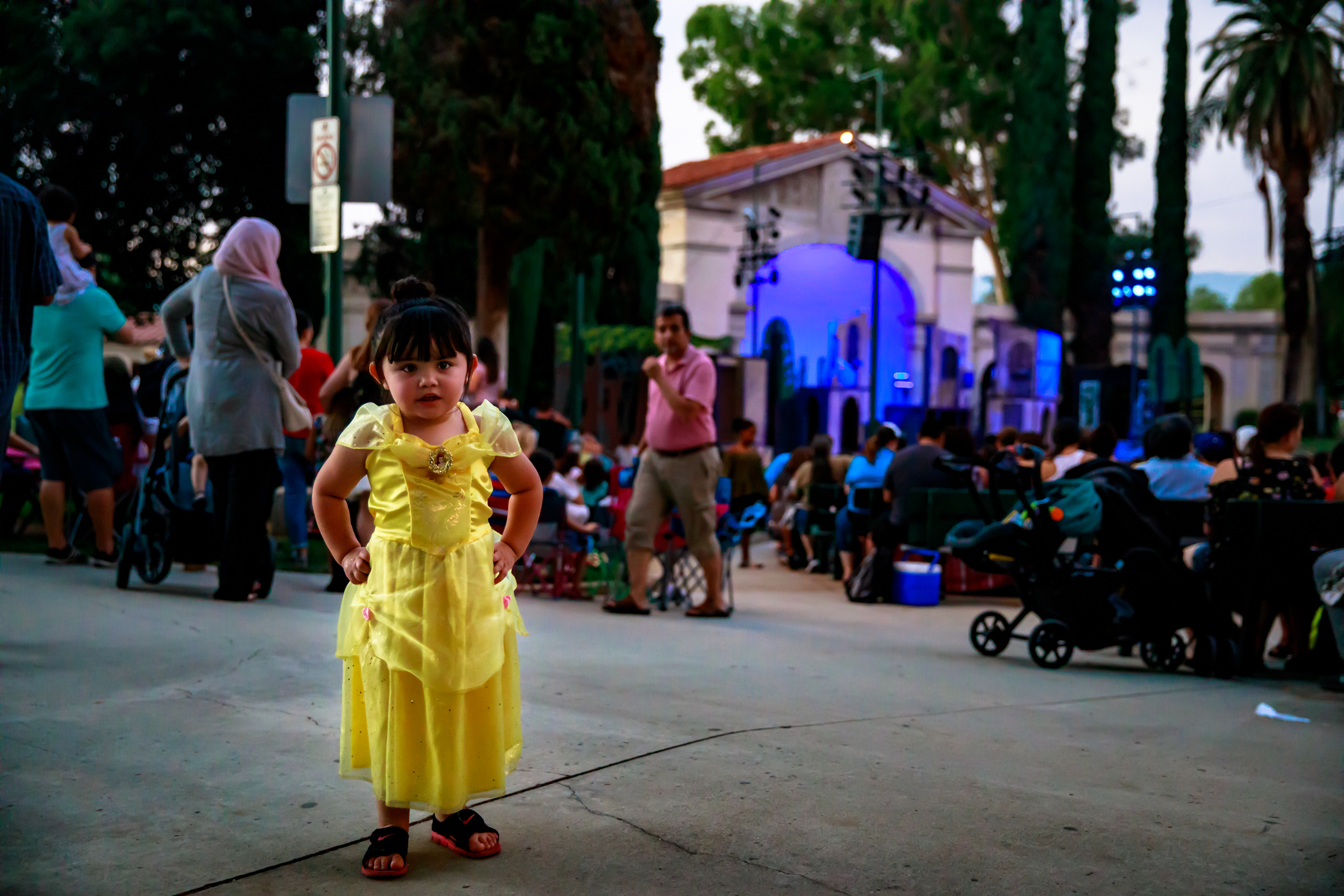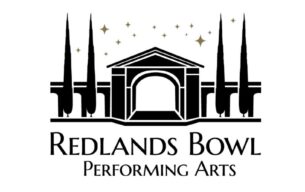
Photo by Matt Ringel. Beauty and Beast 2018
- How to Get the Most Out of a Performance
- Concert Etiquette
- Music Literacy
- Notes for Parents (and Curious Kids)
- Musical Styles of Performance Offered on the Redlands Bowl Stage
How to Get the Most Out of a Performance
- Read the program. Notice who wrote the music and who’s performing it. Remember these things so you can talk about them later. If someone asks you about the concert, it’s embarrassing not to know what was played. Also, notice how many movements or sections are in a piece so you’ll know when to clap.
- Listen carefully. If you can see different groups of instruments playing, listen for their unique tone or timbre. Listen for loud and soft parts. Also notice if the music is gradually getting louder (crescendo) or softer (diminuendo). Listen for fast or slow sections. Listen to the beat. Is it like a march or a waltz?
- Use your eyes. Watch how the performers hold their instruments and move their hands and fingers. Watch how the conductor is moving his or her arms and the baton or stick. Watch how the audience is responding.
Self-Check: true or false
- Never read the program.
- It’s important to know what composition is being played.
- Keep your eyes closed for the entire concert.
- The word for getting louder is crescendo.
- The conductor’s stick is called a “baton.”
(Key: 1f, 2t, 3f, 4t, 5t)
Top of page
Concert Etiquette
Remember that this is a live performance. The performers can be distracted by outside noise, and if the listener misses a part, there is no way to replay it.
Do not talk during a performance. In a quiet space, even a whisper can be heard by, and annoy, dozens of people.
Notice how many movements, or sections, are in a piece. It is appropriate to clap only at the end of the whole piece. (Many adults do not know this.) All the sections are actually related. They may have similar musical themes or be in related keys. An experienced listener can notice these things.
At the end of a Classical music concert, clapping is the appropriate response. Whistling or cheering are not appropriate, although it is traditional to shout Bravo after an exceptional performance.
Try not to move around. This can be very distracting to others. If you must leave before a concert is over, wait until the end of the particular piece being performed.
Things which may not seem irritating to you may be irritating to others. Do not text message or open snack packages.
A concert is a shared experience. Be a good team player.
Self-Check: true or false
- Talking is okay during a concert if you whisper.
- Whistling is an appropriate way to show appreciation.
- You should not clap between movements.
- Performers are not bothered by noise from the audience.
- You should not text message during a concert.
(Key: 1f, 2f, 3t, 4f, 5t,)
Top of page
Music Literacy
Even if you are not a musician or do not particularly want to play an instrument, music is part of our culture, and becoming an educated person requires that you know something about it.
Music is written on a music staff, which is five parallel lines. Notes written on the lines indicate to the performer how high or low to play, and how long to hold out the tone.
Rests are silences between the notes.
There are many words which you will hear when people are describing a piece of music. Some of the most common are:
Tempo – this is how fast or slow a piece is. The terms musicians use to describe the speed are in Italian. This way, musicians from any country can understand the directions. Some examples of Italian words indicating tempo are: Allegro; Adagio; Vivace.
Meter – this describes the beat.
Key – a piece is describes as being in a certain key or tonality. For the performer, it means how many “sharps” or “flats” he or she must observe.
There are other words which describe types of compositions. Some of the words you will encounter most often written on programs are:
Symphony – A symphony is a piece for the full orchestra. Most often, it has four sections or movements. Usually the first and last movements are fairly fast, and a slower movement is somewhere in the middle. All the sections are related and the audience should clap only at the very end.
Concerto – A concerto is a composition for one solo instrument accompanied by the orchestra. Most often, it has three movements. The middle one is usually slow. Many famous violin and piano concertos have been performed on the Redlands Bowl stage.
Sonata – A sonata is a piece for a solo instrument. Usually it has three movements as well: fast, slow, fast.
Look and listen for these words and ideas the next time you attend a concert.
Self-Check: true or false
- A movement is a section.
- Music terms are in French.
- This is a rest:
- A symphony is for a solo instrument.
- Tempo means how fast or slow.
(Key: 1t, 2f, 3t, 4f, 5t)
Top of page
Notes for Parents and Curious Kids
The Redlands Bowl affords a tremendous opportunity to expose your child to high quality music and dance performances nearby and without charge.
The information offered on these web pages is intended to help children to become better and more informed concert goers. It is by no means exhaustive. Often a smaller dose of information is better retained. The goal is name recognition for composers, ideas, and compositions. Hopefully, this can pique your child’s interest and lead to further study.
A self-check quiz is offered at the end of each section to help retention of information.
